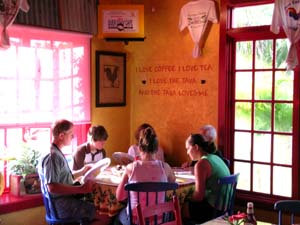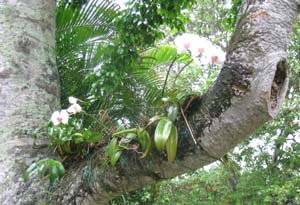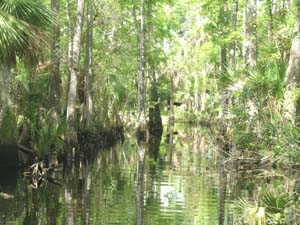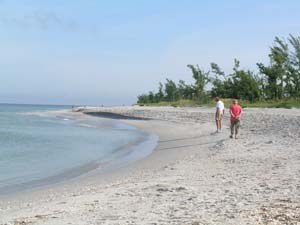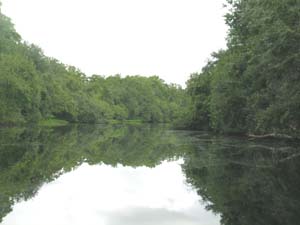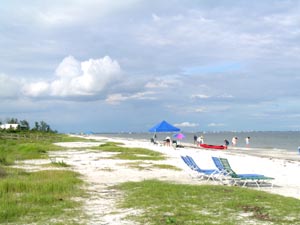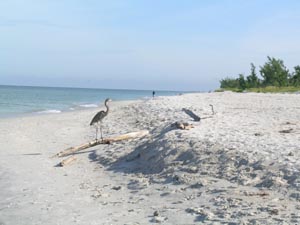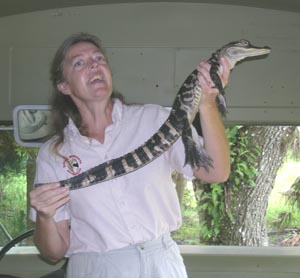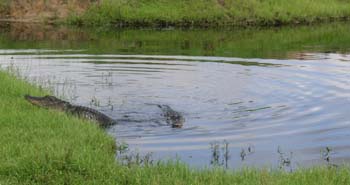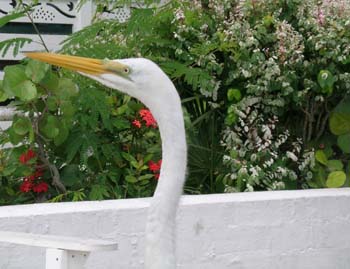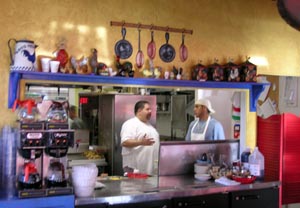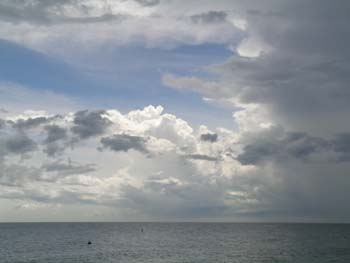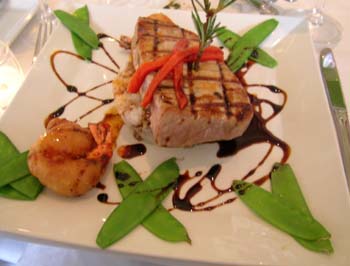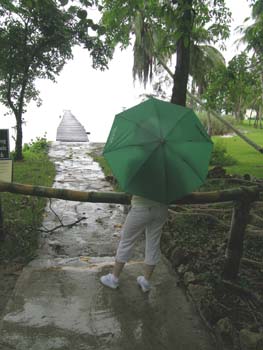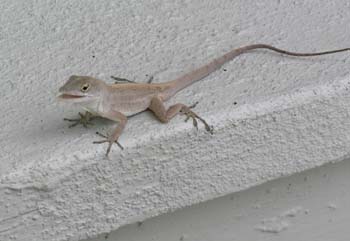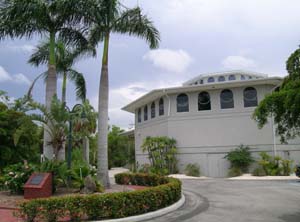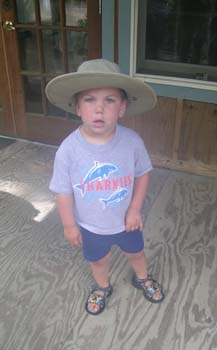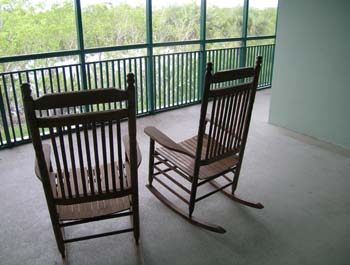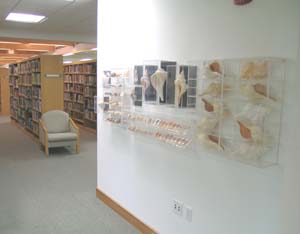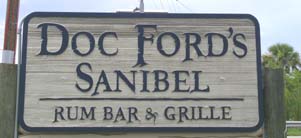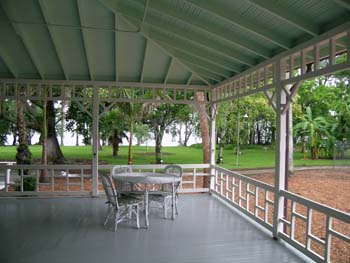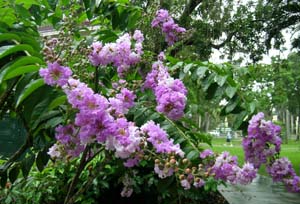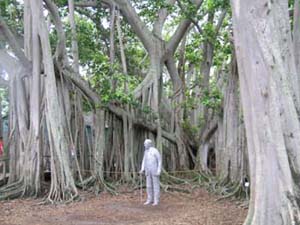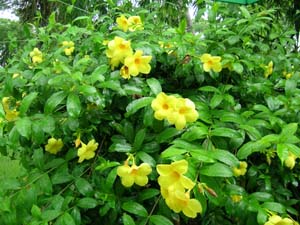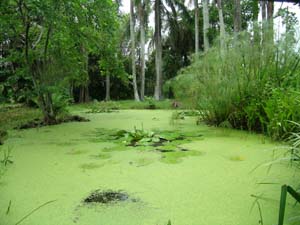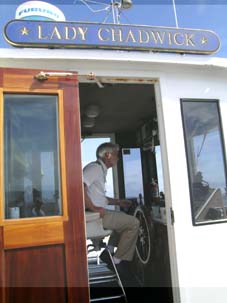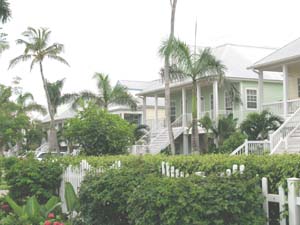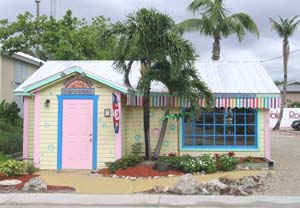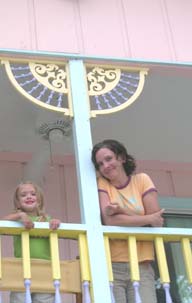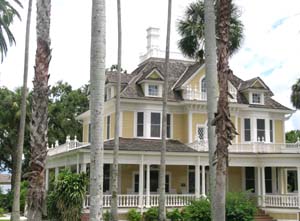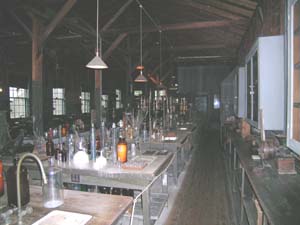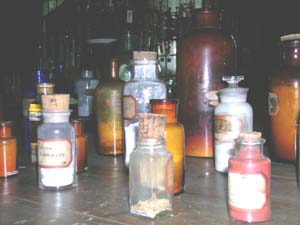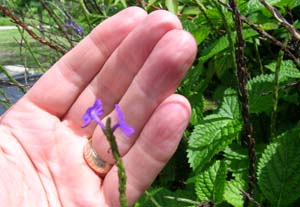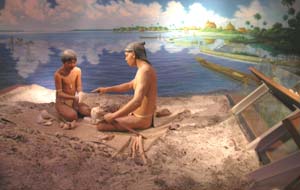 |
|||||
Lee
County Living: If I had my druthers, I would not be sitting here at my computer — glancing every now and then at the gusts of snow swirling past my thermopane windows, and the naked maple trees struggling with the churlish winds ... and feeling confined. I would instead, be on my way to my home airport (YYZ) and from thence to the Southwest Florida International Airport (RSW) — “Gateway (sigh...) to Ft. Myers and Florida's Gulf Coast.” Why do I hear Peggy Lee's sultry voice singing “Summertime, when the living is easy...”? |
|||||
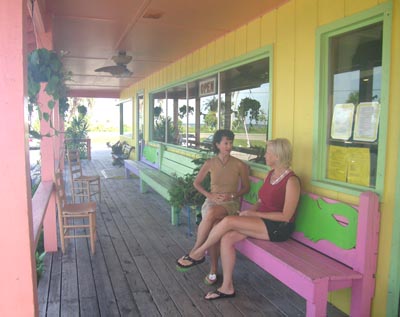 |
|||||
But I guess there's no point moaning and groaning. I will however allow myself to slip into something comfortable and indulge myself in some winsome and warm memories.
“The glad indomitable sea” As Floridians and seasoned Snowbirds know well, Florida is a state full of surprises, and unexpected experiences. It is far more than the one-dimensional image we often tuck away on our mental hard drives. And, as I discovered, Lee County on Florida's Southwest Gulf Coast is a cornucopia of life experiences. As Anne Morrow Lindbergh reflects in her book — inspired by the seashells she collected the beaches of Sanibel and Captiva Islands — this area is very much alive, on many levels and in many ways. The beaches of course are stupendous, but there is much more to experience as you move and think laterally in Lee County. I have always found shell collecting a curious human behaviour; why would you spend long days walking the same or similar beach in search of more of the same? However, my visit to the Bailey-Matthews Shell Museum on Sanibel Island (an architectural gem) was all I needed to understand how shells have played a key role in ecology, medicine, literature, religion, art, architecture, and as a source of food. It also dawned on me why this kind of Zen-like activity is as much ritual as it is time well spent — returning to the sea. And I suppose we can pardon ourselves for taking much for granted when engaged in quiet blissful activity; it goes with the territory. In Lee County, the shell collector's distinctive body language is referred to either as “the Sanibel Stoop” or the Captiva Crouch.” My favourite shell, by the way, is the graceful Lightning whelk (Busycon sinistrum). And I soon discovered that exploring Lee County was not unlike shell-collecting; it was resolving the disconnect (however temporary) that can often be a by-product of cold urban lives. So when you begin to feel an oncoming cold — or a winter of your discontent — you might want to check out Lee County. Alive and well in Lee County Nature and the natural environment are pretty much what Lee County is all about. The living is indeed easy but it is also bountiful. For example, there are over 300 species of birds who visit or live along the beaches of Fort Myers and Sanibel Island. Just to give you a starter's birding list, you will see great egrets, majestic wood storks, delicate white ibis, the flamboyant roseate spoonbill, herons of all kinds, red-shouldered hawks, bald eagles, anhingas, owls, wrens, warblers, and my favourite the ubiquitous osprey whose elegance in flight is unparalleled. What is particularly notable about Lee County is that many original habitats of protected wildlife and nature areas have been left intact. “Lush” is an understatement for this environment where you will see and learn to appreciate plants such as palmettos, the mighty mangroves, royal palms, mango trees, orchids growing wild, the aromatic and lofty cypress trees, and the largest Banyan tree in the continental U.S. The region is one diverse, unique but fragile ecosystem. The shallow waters comprise an extensive estuary (where freshwater and saltwater meet) that is in itself a natural aquatic preserve of unique flora and fauna. And when you allow yourself to penetrate this natural world, physically and conceptually, you will quickly begin to appreciate the esthetics of the ecosystem. As you walk along a meandering boardwalk through a dense Mangrove swamp, all your senses will seem to coalesce, and there will be little separation between you and the life forms that surround you. And if you have a knowledgeable guide, you will learn the importance of the Mangrove. These majestic trees thrive in a saltwater environment because they have the ability to take in freshwater from saltwater and secrete the excess salt through their leaves. With their far-reaching root systems they also form nurseries for many species of fish, crustaceans, and shellfish. And like the wise homo sapiens of Lee County, they are instrumental in contributing to the health of the overall coastal zone. Just take a quick side trip to the Lee County Parks and Recreation (Natural Resources) website, and you'll start to get an idea of what I am talking about. You back? Good. Now let me give you a couple of vicarious travel experiences in Lee County to whet your soft adventurer/ecotourist appetite. The Ding Darling National Wildlife Refuge
Babcock Wilderness Adventures
Food for thought in Lee County When I visit a new destination, I often head to the public library to a get a sense of what is really going on in town. As I've always said, “When in doubt, ask a librarian.” The library on Sanibel Island did not disappoint. Here is a state-of-the-art public facility with an architecture that emphasizes the milieu in which it is located. I recommend a visit. Note the shell motif throughout. Note also the extensive collection of local history. If, when you travel, you like to get a more integrated perspective on a destination by exploring the history of the place, Lee County is the trip for you. Layers of history (literally and figuratively) are inherent in Lee County — and often a very hands-on experience. Click here to visit the Sanibel Public Library.
Really getting out and about in Lee County The wind in your hair, the sun on your upturned face, the salt air, the gathering of dolphins dancing and cavorting in your wake; you have to do an island cruise when you come to Lee County. And so we did, from Captiva to Cabbage Key and back, followed by a stroll through funky and friendly Andy Rosse Lane (where hippy dippy has not gone totally out of style). Casual, cool, and arts-oriented; the latter is a variation on a theme — meet the locals, have lunch of dinner, and just enjoy the good times.
Delicious Lee County You want yummy? Sophisticated, historic, and gourmet? Garish, funky,and playful? Unpretentious and honest? An ambiance that evokes the kind of sensual tropical evening that you run away from winter for? You want it? You got it — in Lee County. Here's a sample.
Literary Lee County Randy Wayne White is the author of the famous mystery novels of which the protagonist is a certain Doc Ford. Ford is a common sense kind of guy who doesn't go looking for trouble, but it often finds him. Of course in the end he manages to sort things out — as best he can. Like his principal character, White has the same kind of semi tough-talking style that makes for a good story, especially in his novel Sanibel Flats, which one reviewer described this way: “He describes southwestern Florida so well it's easy to smell the salt tang in the air and feel the cool gulf breeze.” When he writes — whether it be novels or editorials — White doesn't mess around. He tells it like it is.
Click here to spend some time with Doc ... I mean Randy Wayne White. The quiet purposefulness of Lee County “Nature does nothing in vain.” — Aristotle In Lee County you can always have a good time, but you do not need to live (however temporary) an aimless existence. Every shell you admire will not be a random act; it is not in the nature of the place to encourage such a frivolous mindset. For more information, visit the Lee County website. Also recommended are: The VisitFlorida website and its “Downtowns & Small Towns” webpage.
|
|
||||
|
|||||
A Footnote: This news comes from Lee Rose, Communications Manager of the Lee County Visitor & Convention Bureau. For the second year, Condé Nast Traveler magazine’s 2005 Readers’ Choice Awards have acknowledged Sanibel and Captiva islands as among the “destinations approaching perfection.” They earned spots on the Top-10 North America Islands list: Sanibel Island ranked fourth, while Captiva Island came in at No. 6, both higher standings than in last year’s survey. Also, one of the newest airport terminals in the U.S., Southwest Florida International Airport, sent off its first flight from its new Fort Myers facility on Sept. 9, 2005. The $438-million building project includes a new 798,000-square-foot terminal, taxiway and related roadways. For Canadian Snowbirds, non-stop service from Toronto is available from Air Canada and WestJet, while Air Canada provides non-stop service from Montreal. For further details, contact Lee Rose |
Photographs by Bob Fisher |
||||
